Shopping cart
0
The product has been added to your shopping cart.
Check shopping cartAn HIV antigen/antibody test (also known as a 4th generation HIV test) looks for HIV antibodies as well as the p24 antigen in the blood.
The p24 is a structural protein that makes up most of the HIV viral core, or 'capsid.' These proteins are present in high levels in the blood serum of recently infected individuals during the short period between infection and seroconversion. They trigger an immune response, which starts the production of antibodies.
Like most other tests, the antigen/antibody test also screens for antibodies. However, as antibody levels take much longer to become high enough for detection, the antigen screening component proves itself significantly more useful in diagnosing primary HIV infection.
While there are some rapid HIV antigen/antibody tests that use blood drawn from a finger, lab-based antigen/antibody tests, which take blood from a vein, will detect the presence of antigens in the blood earlier with more reliability.
Need a rapid at-home HIV antibody test? Order it from our Webshop and receive it within 24h in most European countries.
A non-reactive, or negative HIV test means that the test has not detected any evidence of the human immunodeficiency virus (HIV) in the sample provided.
If you have carried out the test correctly and followed the instructions carefully, and it has been more than 3 months since your last possible exposure to the HIV virus, you can be confident that you do not have HIV.
False negative results are unlikely, but if the test was performed within the 3-month "window" period and not in a laboratory, or if it was a saliva test, a retest is recommended to confirm the result. This will give you the reassurance that you genuinely are free from HIV.
Know your HIV status — test yourself with one of our at-home rapid HIV testing kits. Delivery takes under 24h for most European countries.
An HIV test requires only mental preparation. Waiting for the results for even the 15-30 minutes that most tests require can be grueling if there is any suspicion of infection; even more taxing on the psyche can be the several days that laboratories often require to process the results.
After setting an intention to take the test, it’s advised to practice mindful activities or to indulge in distractions that would keep the mind from wandering into dangerous rumination. Remember that you don’t know until you know, and that it’s always better to know than to not know.
If you are taking an at-home HIV test, we recommend you follow these steps:
Most importantly, keep in mind that, even if your result comes back positive, with modern medications, HIV can be managed even to the point of undetectability, allowing you to live a full, happy, normal life.
Knowledge is power — learn your HIV status reliably with our at-home rapid HIV tests. Delivery takes under 24h for most European countries.
Instructions
Before starting the test, the testing cassette, specimen, and buffer fluid need to be allowed to reach room temperature (15‐30°C / 59-86°F). Then:
Interpretation of results
Positive Result:
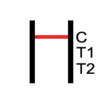 HIV Ab Positive:* The coloured line in the control line region (C) appears, and a coloured line appears in test line region 1 (T1). The result is positive
HIV Ab Positive:* The coloured line in the control line region (C) appears, and a coloured line appears in test line region 1 (T1). The result is positive
for HIV 1 and/or HIV 2 infection.
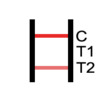 P24 Ag Positive:* The coloured line in the control line region (C) appears, and a coloured line appears in test line region 2 (T2). The result is positive
P24 Ag Positive:* The coloured line in the control line region (C) appears, and a coloured line appears in test line region 2 (T2). The result is positive
for HIV P24 Positive.
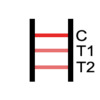 HIV Ab and P24 Positive:* The coloured line in the control line region (C)
HIV Ab and P24 Positive:* The coloured line in the control line region (C)
appears, and two coloured lines should appear in test line regions 1 and 2
(T1 and T2). The colour intensities of the lines do not have to match. The
result is positive for HIV 1&2 infection and HIV P24 Positive.
Negative Result:
 The coloured line in the control line region (C) appears. No line appears in
The coloured line in the control line region (C) appears. No line appears in
test line regions 1 or 2 (T1 or T2).
Invalid Result:
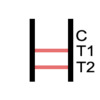 Control line (C) falls to appear. Insufficient buffer volume or incorrect
Control line (C) falls to appear. Insufficient buffer volume or incorrect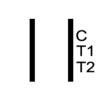 procedural techniques are likely reasons for failure in the control line.
procedural techniques are likely reasons for failure in the control line.
Review the procedure and repeat the procedure with a new test device. If
the problem persists, discontinue using the test kit immediately and
contact our customer service
*NOTE: The intensity of the colour in the test line region (T) will vary depending on the concentration of HIV antibodies or antigens in the specimen. Any shade of colour that appears in the test region (T) should be considered to indicate a positive result.
** INVALID RESULT: If the control line (C) fails to appear, insufficient buffer fluid volume or incorrect procedural techniques are the most likely causes. Repeat the procedure with a new test cassette. If the problem persists, contact us for a free replacement.
A fourth-generation HIV test is generally moderately accurate at various periods after potential exposure to the virus. Here are the estimated accuracy percentages for a fourth-generation HIV test at different times after exposure:
Please note that test accuracy can also vary depending on individual factors, such as the person's immune system and viral load. For the most accurate results, it is recommended to wait for at least 28 days after potential exposure.
The 4th generation HIV test should be read between 10 and a maximum of 20 minutes after performing the test. Within this time frame, the test antibodies and p24 antigen can react sufficiently to provide a reliable result.
It is important to emphasize that reading the result after 20 minutes is not reliable, as the test can even change. Therefore, it is crucial to stay within the specified time frame for the most accurate interpretation.
If you have any questions about reading the result, please consult the test instructions or contact us for advice.
The window period of 4th Generation HIV combo (antigen/antibody) tests is between 13 and 28 days, with 18 days being the median detectability timeframe (50% infections detected). Results obtained on or after the 28th day are considered conclusive by some Western countries such as the UK.
At-home 4th generation HIV test kits are as accurate as rapid HIV tests done in clinical settings. The CDC reports that 4th generation at-home HIV test kits have relative sensitivity (true positives) between 99.7% and 99.9% and relative specificity (true negatives) of 99.5% or higher. This indicates that false positive and false negative results are extremely rare, and those seeking testing can have nearly full trust in their results.
An HIV antigen (also known as the p24 antigen) is a protein the virus introduces into the immune system of the infected person, triggering it to start making antibodies.
This structural protein makes up most of the HIV viral core, or 'capsid,' and its present in high levels in the blood serum of recently infected individuals during the short period between infection and seroconversion.
Certain tests can screen for HIV antigens and detect primary infection much more reliably than only tests that screen for antibodies.
The 4th Generation of HIV tests is a rapid chromatographic immunoassay for the qualitative detection of antibodies to HIV 1 and/or HIV 2 and p24 antigen in whole blood, serum, or plasma
The membrane of the testing strip located in the specimen well of the testing cassette is pre‐coated with latex conjugate and multiple recombinant HIV proteins, which selectively detect antibodies to HIV 1/2 and the p24 antigen. When introduced to the strip, the sample of whole blood, serum, or plasma interacts with these coated particles, then migrates chromatographically up the membrane via capillary action and interacts with recombinant HIV antigen on the membrane in the test line area.
If the sample contains antibodies to HIV 1 and/or HIV 2 or the p24 antigen, a colored line will appear in the test line region, indicating a positive result. A colored line will not appear in the test line region if the material does not contain HIV 1 and/or HIV 2 antibodies nor the p24 antigen, indicating a negative result. A colored line will always appear in the control line region to act as a procedural check, indicating that the right volume of specimen and buffer fluid have been added.
Thanks to its ability to analyze samples for both HIV antibodies and p24 antigen proteins, 4th Generation testing technology is far more advanced than 3rd Generation technology, which can only screen for antibodies. The benefits are: earlier HIV detection (13-28 days compared to 3-12 weeks) and higher reliability due to the dual assay employed.